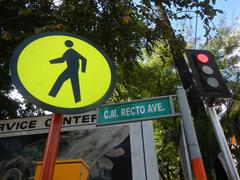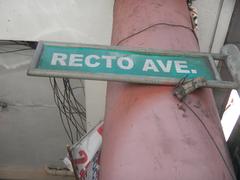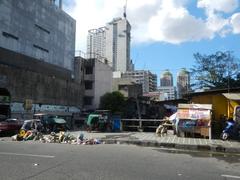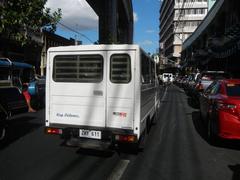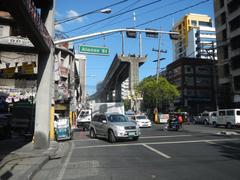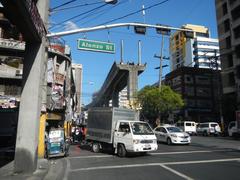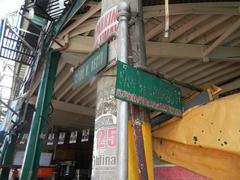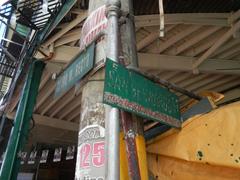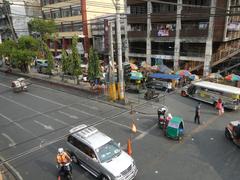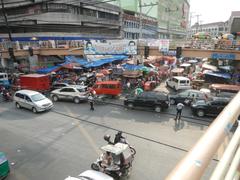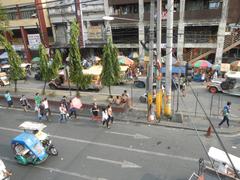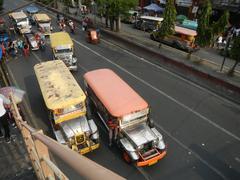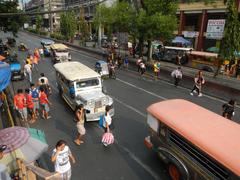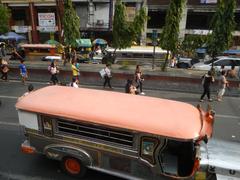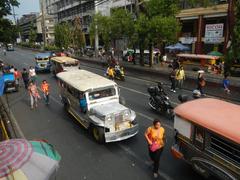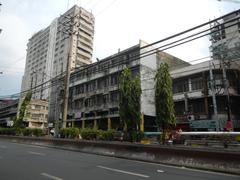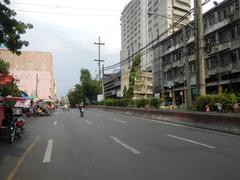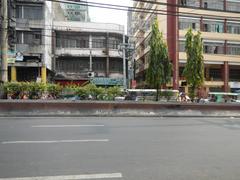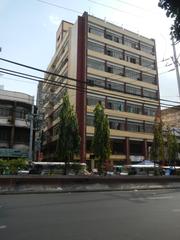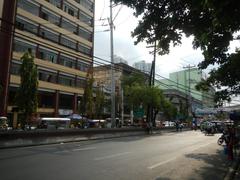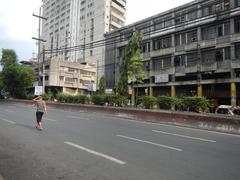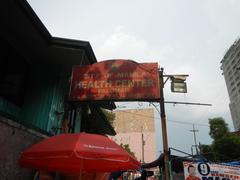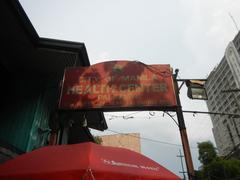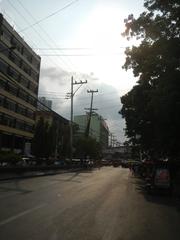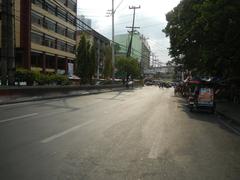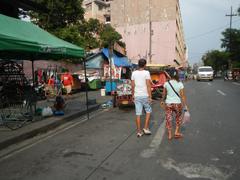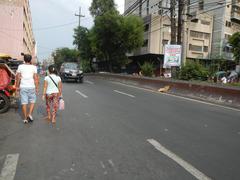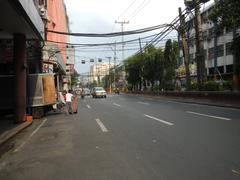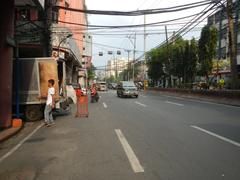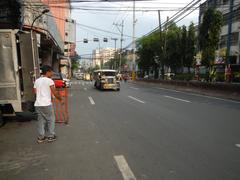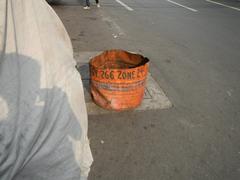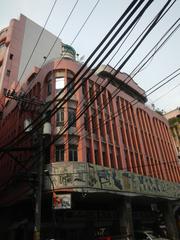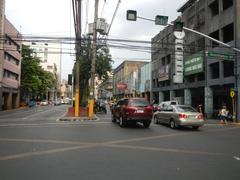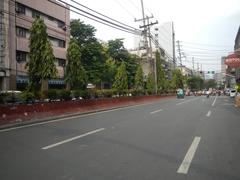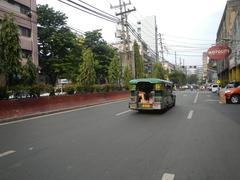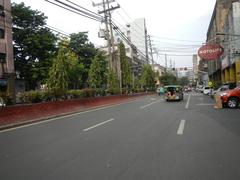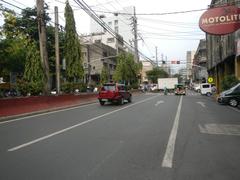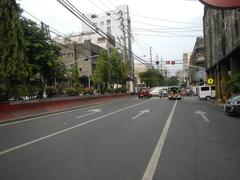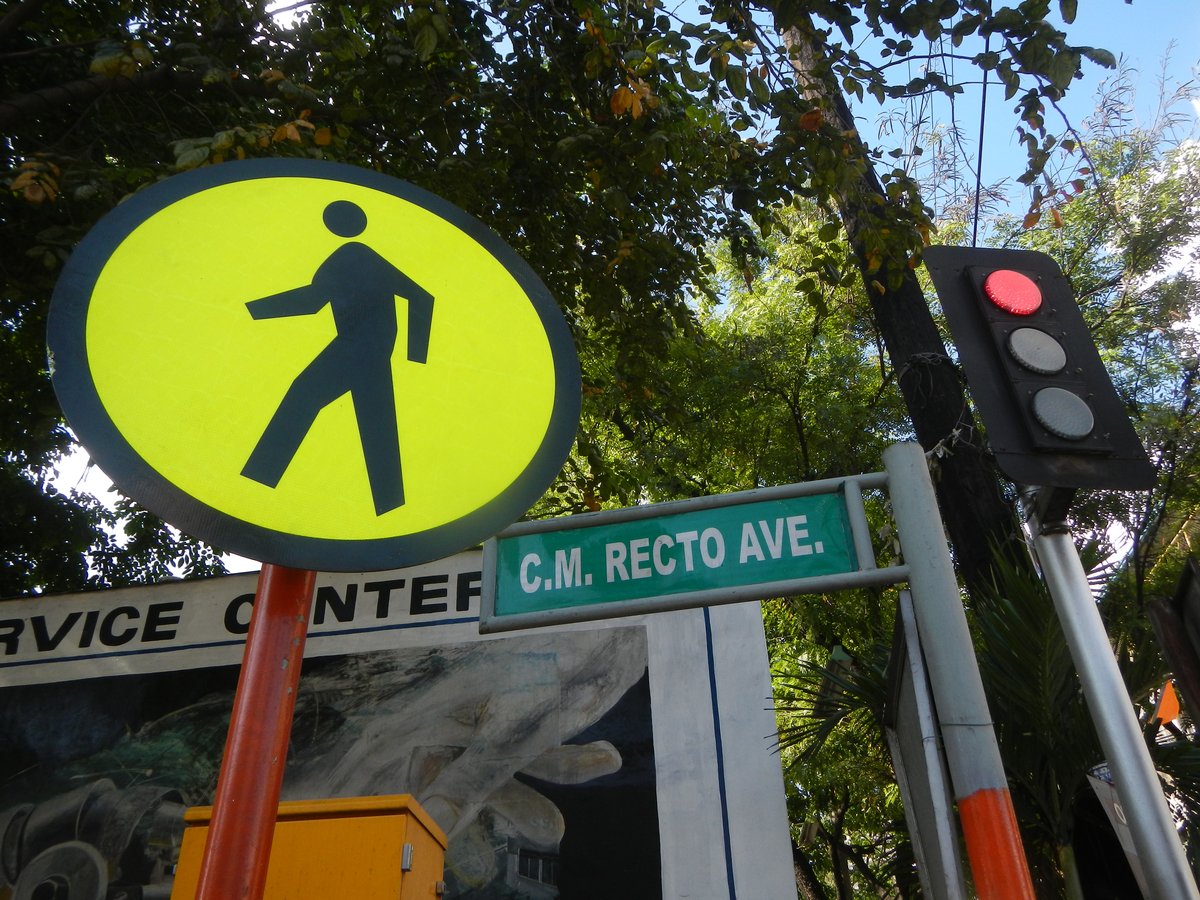
Recto Avenue Metro Manila: Visiting Hours, Tickets, and Historical Sites Guide
Date: 14/06/2025
Introduction
Recto Avenue, located in the vibrant core of Metro Manila, stands as a testament to the Philippines’ rich tapestry of history, culture, and urban dynamism. Spanning approximately 3.6 kilometers north of the Pasig River, this iconic artery is more than a commercial hub—it’s a living repository of Manila’s colonial past, revolutionary milestones, educational vitality, and contemporary street life. Whether you’re a history buff, student, bargain hunter, or urban explorer, this comprehensive guide will help you navigate Recto Avenue’s historical sites, visiting hours, transportation options, safety tips, and local experiences.
Table of Contents
- Historical Overview and Urban Evolution
- Visiting Recto Avenue: Practical Information
- Socio-Cultural Dynamics and Contemporary Identity
- Urban Challenges and Preservation Debates
- Key Landmarks and Urban Fabric
- Transportation and Getting Around
- Local Experiences: Markets, Food, and Bookstores
- Visitor Tips and Safety
- Frequently Asked Questions (FAQ)
- Conclusion & Final Recommendations
- References and Further Reading
Historical Overview and Urban Evolution
Early Development and Colonial Foundations
Recto Avenue traces its roots to the Spanish colonial era, originally named Paseo de Azcárraga after Spanish-Filipino Prime Minister Marcelo Azcárraga. The avenue developed through Manila’s evolving administrative and commercial priorities, with sections named Calle General Izquierdo, Calle Paz, and Calle Bilibid. In Sampaloc, it was known as Calle Iris. Its strategic proximity to the Pasig River and Manila North Harbor established it as a vital commercial route in the late 19th century (Wikipedia).
Revolutionary Significance and Early 20th Century
Recto Avenue holds a crucial place in Philippine history. On July 7, 1892, at 72 Calle Azcárraga (now Recto Avenue), Andrés Bonifacio founded the Katipunan, catalyzing the nation’s struggle for independence. The site is commemorated by monuments and markers (WeHateTheCold). In the early 1900s, the avenue also thrived as a cultural hub, with theaters like Teatro Libertad and Zorrilla Theatre drawing Manila’s elite, while rail and tranvía lines cemented its role as a transport corridor (Wikipedia).
American Colonial Period and Urban Expansion
Under American rule, Recto Avenue expanded westward to support the burgeoning Manila North Harbor. This era saw the rise of public transport (buses, jeepneys) and further commercial development, laying the groundwork for the avenue’s present-day vibrancy (Wikipedia).
Postwar Transformation and Renaming
Following World War II, Recto Avenue quickly reestablished itself as a bargain shopping haven. Malls like Tutuban, Isetann, 168, and 999 became staples. In 1961, the street was renamed Claro M. Recto Avenue in honor of the nationalist senator, despite some resistance from then-Manila Mayor Arsenio Lacson (Digital MNL).
Infrastructure and Transportation
Recto Avenue is now a linchpin in Manila’s transit network. It is served by LRT Line 1 (Doroteo Jose station), LRT Line 2 (Recto station), and the Philippine National Railways’ Tutuban station. The LRT Line 2 viaduct, operational since 2004, further links the avenue to Metro Manila’s broader transportation grid (Wikipedia).
Visiting Recto Avenue: Practical Information
Visiting Hours and Accessibility
- General Access: Recto Avenue is accessible 24/7.
- Shops/Markets: Most open 8:00 AM to 8:00 PM; some markets extend to 9:00 PM.
- Heritage Sites & Churches: Typically open 6:00 AM to 6:00 PM.
- Universities: Generally open during school hours; guided tours may require prior arrangement.
The avenue is well-served by LRT, buses, jeepneys, and taxis. Major transit stations (Recto, Doroteo Jose, Tutuban) have basic accessibility features, but sidewalks can be uneven and crowded.
Tickets and Guided Tours
- Street Access: Free.
- Landmarks: Most, such as Tutuban Railway Station and monuments, are free to visit.
- Guided Tours: Offered for select sites (e.g., Far Eastern University, San Sebastian Church) via local organizations or by arrangement with heritage groups.
Nearby Attractions and Photographic Spots
- Tutuban Market & Railway Station: Heritage architecture and vibrant market life.
- University Belt: Art Deco FEU campus, University of the East, and San Sebastian College.
- Divisoria & Binondo: Manila’s top bargain and culinary districts.
- Katipunan Monuments: Celebrate revolutionary history.
Socio-Cultural Dynamics and Contemporary Identity
Recto Avenue is a microcosm of Manila’s complex identity. It is renowned for its energetic street life, a bustling mix of formal commerce and informal economies. The avenue earned the nickname “Recto University” due to the once-prolific document forgery industry, reflecting wider socioeconomic challenges. Despite these, Recto remains a center for students, vendors, commuters, and cultural expression (Wikipedia, Zenodo PDF).
Urban Challenges and Preservation Debates
Persistent issues—congestion, informal vending, and petty crime—pose challenges. There are ongoing debates about preserving Recto’s historic character amid rampant urban modernization. Recent initiatives focus on infrastructure upgrades, safer pedestrian spaces, and formalizing street vending, balancing heritage with progress (Digital MNL).
Key Landmarks and Urban Fabric
Major Landmarks
- Tutuban Railway Station: Historic transport hub anchoring the western end of Recto.
- University Belt: FEU (Art Deco architecture), University of the East, San Sebastian College.
- Katipunan Monuments: Sites marking the birthplace of the Philippine Revolution.
- San Sebastian Church: Asia’s only all-steel basilica, a UNESCO candidate (Jontotheworld).
- Quiapo Church: Renowned for the Black Nazarene and vibrant street life (Guide to the Philippines).
Architectural Heritage
Recto Avenue features a mix of colonial-era facades, Art Deco and neoclassical structures, and newer commercial buildings—each layer narrating a chapter of Manila’s urban evolution (Zenodo PDF).
Transportation and Getting Around
LRT & Rail
- LRT Line 2 (Recto Station): Main access point; connects to University Belt and Divisoria; operates 4:30 AM–10:00 PM (Philippine LRT Official Site).
- LRT Line 1 (Doroteo Jose Station): Short walk to Recto.
- PNR Tutuban Station: For regional rail.
Other Modes
- Jeepneys & Buses: Affordable, extensive routes but crowded (Onlooq).
- UV Express Vans & Taxis: More comfort, especially at night or after shopping (federalland.ph).
- Tricycles/Pedicabs: Ideal for short distances.
- Private Vehicles: Possible, but traffic and limited parking make public transport preferable (More Fun With Juan).
Local Experiences: Markets, Food, and Bookstores
Markets and Street Vendors
Recto’s sidewalks are lined with vendors selling clothes, electronics, school supplies, and souvenirs. Tutuban and Divisoria are renowned for bargain shopping.
Bookstores and Academic Shops
A haven for students, the avenue hosts numerous bookstores and academic supply shops, open 9:00 AM–7:00 PM. Beware of illegal document vendors—avoid engaging with them.
Street Food and Local Eateries
Enjoy iconic Filipino snacks such as kwek-kwek, fish balls, isaw, and banana cue from morning until late evening. Numerous carinderias offer affordable meals (Guide to the Philippines).
Theaters and Entertainment
While many old cinemas have closed, remnants of Manila’s golden age of cinema are visible in the area’s architecture. The Manila Grand Opera House site now hosts the Manila Grand Opera Hotel, which sometimes features heritage exhibits (Manila Grand Opera Hotel).
Visitor Tips and Safety
- Best Time to Visit: Weekdays, early morning or late afternoon for fewer crowds and milder temperatures.
- Safety: Be vigilant in crowded areas; keep valuables secure; avoid poorly lit streets at night.
- Accessibility: LRT stations are equipped with ramps and elevators, but street-level accessibility varies.
- What to Bring: Comfortable shoes, water, cash for small purchases.
- Travel in Groups: Especially if unfamiliar with the area.
Frequently Asked Questions (FAQ)
What are the visiting hours for Recto Avenue and its landmarks?
Recto Avenue is open 24/7; most shops and landmarks operate from 6:00 AM–9:00 PM. Confirm hours for specific sites.
Is there an entrance fee?
No fees for the avenue or most monuments; some sites (universities, hotels) may charge for tours or exhibits.
How do I get to Recto Avenue?
LRT Line 2 Recto Station is the most convenient. Jeepneys, buses, and taxis are widely available.
Are guided tours offered?
Yes, for select sites like FEU and San Sebastian Church. Inquire with local tour operators or directly at the sites.
Is Recto Avenue safe for tourists?
Generally safe during the day. Be alert for petty crime and avoid isolated areas at night.
Is the area accessible for people with disabilities?
LRT stations have basic accessibility features, but sidewalks and markets may be challenging.
Conclusion & Final Recommendations
Recto Avenue encapsulates the essence of Manila’s past and present—colonial heritage, revolutionary fervor, educational energy, and streetwise commerce. Its integrated transportation network, from LRT stations to traditional jeepneys, makes it a convenient starting point for exploring Manila’s historical core.
Immerse yourself in its lively markets, sample authentic street food, and appreciate the architectural contrasts that define its urban fabric. For the safest and most enriching visit, plan daytime explorations, utilize public transport, and consider guided tours for deeper historical context.
Stay updated on Manila’s latest attractions by downloading the Audiala app and following our social media channels. Explore related posts for more travel inspiration and in-depth guides to the city’s most fascinating neighborhoods.
Featured Images and Maps:
Internal Links:
- Explore more about [Manila Historical Sites]
- Discover the [University Belt in Manila]
- Visit [Tutuban Market and Railway Station]
External Links:
References and Further Reading
- Wikipedia: Recto Avenue
- Is Manila Safe? Exploring Katipunan History, WeHateTheCold
- Histreet: C.M. Recto Avenue, Digital MNL
- Baseline Study on Manila’s University Belt, Zenodo PDF
- Recto Avenue Manila, Trek Zone
- How to Get Around Metro Manila: Transportation Options, Federal Land
- Complete Guide to Philippine Public Transportation, Onlooq
- How to Get to Recto Manila, More Fun With Juan
- 10 Historic Streets in Manila Every Pinoy Should Know About, Spot.ph
- Best Intramuros Tourist Spots, Jontotheworld
- Guide to the Philippines: Manila Travel Guide
- Quiapo Travel Guide: Things to Do, Out of Town Blog
